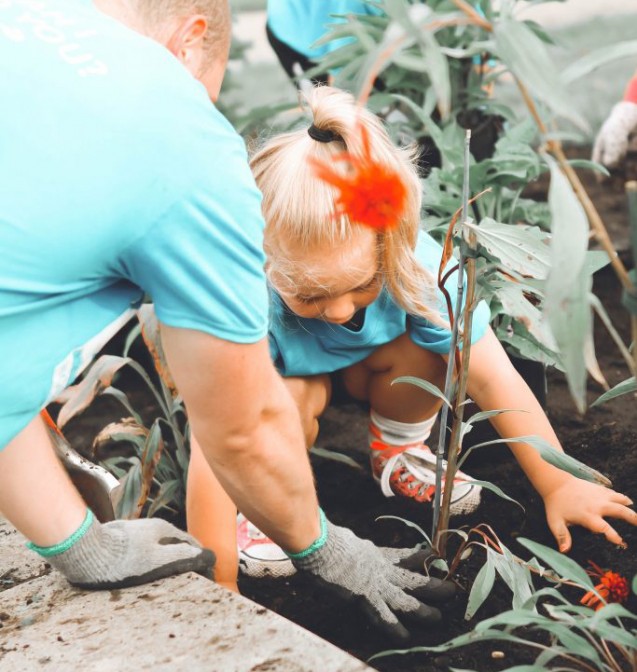In Conversation with Chris Blythe of Social Farms & Gardens UK
Dr Nick Rose, Executive Director, Sustain“Care farming is the therapeutic use of farming practices for people with a defined need to solve issues or improve life chances.”

London, 14th December 2019
Before Christmas, Sustain’s Executive Director Nick Rose travelled to London to meet with Chris Blythe, our keynote international speaker for the 3rd national Urban Agriculture Forum, “Care Farming and Gardening in the Climate Emergency”. Nick conducted an extensive interview with Chris which covered a wide range of topics associated with the care farming sector in the UK. We will be publishing this interview in the form of a number of blogs over the coming weeks. Here is Part 1.
Q: Tell us a bit about Social Farms and Gardens in the UK
A: We support 1500 members across the UK, including a wide range of community gardens, city farms, and care farms. In April 2018 the Confederation of Community Gardens and City Farms merged with Care Farming UK to form Social Farms and Gardens, bringing together that wide sector of organisations.
Care farming is a big part of our organisation. We’ve recently been in receipt of Government funding through the Department of Education, via DEFRA & Natural England. This is to support a 3 year project – Growing Care Farming UK - both to develop the number of care farming places, and also to develop the capacity for those places, by working with and engaging commissioners and schools to hopefully fund some of those places for the care farmers who’ve created them.
Q: What is care farming?
A: Care farming is a growing part of the nature-based health and well-being sector, encompassing all activities in nature from daily contact with nature all the way through to specific green care activities, such as care farming and social & therapeutic horticulture. In the same way that social and therapeutic horticulture is the use of horticulture for people with a defined need to solve specific problems, care farming is the therapeutic use of farming practices for people with a defined need to solve issues or improve life chances.
The main thing about care farming is that it’s not about creating tasks or things for people to do. It’s about people becoming engaged with and involved in day to day farm practices. That might involve mucking out, animal husbandry, gardening within the care farm – a whole range of things, but not tasks which are specifically developed for service users. They are things that happen every day in the farm.
In some of the models, the clients will live with the farming family or close by. Other models will take groups of youngsters for periods of time, or weekly sessions. There are a whole range of different models and different approaches.
Q: Tell us a bit about the history of care farming. When did it become recognised?
A: Care farming, and its predecessor, the National Care Farming initiative, both grew out of the foot & mouth crises of the early 1980s. They were one of the responses for a number of farmers looking to diversify and expand the activities on their farm.
Within Europe, care farming in Holland has a long-established tradition going back to immediate post-war years. The interesting thing is that we in the UK call it “care farming”, which is a direct translation of the Dutch. In Ireland, they call it “social farming”. In Italy, they don’t call it anything like that at all, they don’t have a phrase for social farming or care farming. One of things that I’m really strong about is that we try not to talk about places by reference to their physical form, we focus more on the care and social farming activity on the farm itself, rather than a ‘care farm’ or a ‘care garden’. That way we’re making the movement more accessible and not putting people in boxes.
Q: How would you describe the therapeutic benefits of care farming?
A: We know the evidence is there. We know that people looking out over green, as opposed to looking out over a brick wall, recover more quickly. That’s the starting point. We know that people who spend more time in nature, have better, pro-environmental behaviours. They tend to recycle more, and use less plastic, etc. Those are key benefits.
You think about health. People’s recovery rates are quicker. People’s dependence or use of drugs tends to be less or decline more quickly. People show more sustained recovery from, for example, alcoholism, by being part of a group, and having a connection with nature, and being outdoors. It’s not just about being outdoors – it’s having an activity and a purpose. It’s not just about being on the farm; it’s being on the farm, and being part of the farming community. Making a useful contribution to the farm work, and being part of a group, is important.
We ran a gardening program in Birmingham a few years ago, and conducted a survey of 6000 participants. 87% said that had made new friends while being part of the program. Having something regular to go to and be involved in, makes a major impact on isolation, which is a major risk factor in terms of mental health.
It’s not like we say, you go and do a care farming activity and this will happen to you. It’s more that you spend time in nature doing a care farming activity, and all these things may well happen to you.
Q: What are the benefits and impacts of care farming more broadly, and for farmers?
A: Ultimately there is a financial benefit for farmers, although that depends on the model. Many care farmers receive payment from a local authority or whoever is commissioning the services. We hope to increase that through the Growing Care Farming program. Each care farming sessions costs in the region of 54GBP (about $AUD100) to run for a 4-hour session.
The agriculture sector in the UK faces the Brexit challenge, the ecological challenge and the climate change challenge. Those factors around food are drivers of radical change – but what does a radical change of the food system look like that satisfies everyone, that is actually fair and equitable, and enables more people to access food in its broadest sense?

One of things that any form of farm activity, be it care farming, be it Open Farms Sunday, be it school visits to farms, etc. is that it increases people’s awareness of our food system, awareness of where food comes from. Whatever the context, that’s so important - building connectivity and food systems literacy.
I have a good friend called Sarah. She works for a big retailer and has done for about 10 years. She’s a senior store manager. Five years ago, when she was in her mid-30s, she came to me for a meal, and we went to the local community garden to pick some carrots. Sarah was absolutely amazed, at her age, and with her level of commercial acumen, looking at these carrots out of the ground. I was just gobsmacked at her reaction. Carrots, for Sarah, didn’t necessarily come out of ground, at that point in her life. They appeared on a supermarket shelf wrapped in plastic. That’s where we are – in terms of people’s disconnection from food and farming – and that’s what we need to change.
Q: Where do the local authorities obtain their funding to support care farming? Is quality assurance important?
A: In many cases, funding to commission care farming will come from social care / education. The key thing is that the funding is for people with a defined need – e.g. young children, or young people who’ve been excluded from school – there’s usually a budget attached to them. Also for young people on pupil premium – low income families, students who qualify for school meals – the schools will usually have a budget attached to them.
What we do face with the increasing academicization (Academy Trusts) of the school system, is that those school budgets that traditionally would have stayed in the school community, are now getting lumped into one pot, and the Academy is not necessarily using it for external purposes. That’s been the cause of a lot of school farms closing in the last five years in the UK. The government has committed to make all schools academies, aggregating 10,12,15 or even sometimes 100 schools under a single Academy Trust. The Trust receives all the funding for the schools within the Trust and then decides how to spend those funds. It has led to improvements in education, but my view is that the add-ons have slightly suffered, especially with school farms closing.
Within the social care sector funding for people with defined needs – e.g. mental health needs / physical health needs, again a lot of that potential funding is tied up within the current way the system is designed. Money comes to a local authority for social care, rather than health care. We have a Code of Practice, a quality assurance document, similar to an accreditation system, where a farm can show that it has necessary safeguards and structures and governance in place for referrals from a local authority. Some local authorities only refer to care farms that have complied with the Code of Practice. Supporting farms to obtain this compliance is something that we are making our role as Social Farms and Gardens.
As we see the advent of social prescribing, this is becoming more important. For GPs and link workers involved in social prescribing, there needs to be some form of quality assurance in place. That’s a growing area. GPs can refer to care farms if they wish to. The flow-through of funding is from social care rather than health care, but funding can come from health care and that’s one of the objectives of the Growing Care Farming project: that the health system will see the value of care farming and begin a referral process.

Want to learn more about Social Farms and Gardens work?
Care Farming Case Studies available here
Follow Social Farms and Gardens
Check out the Urban Agriculture Forum